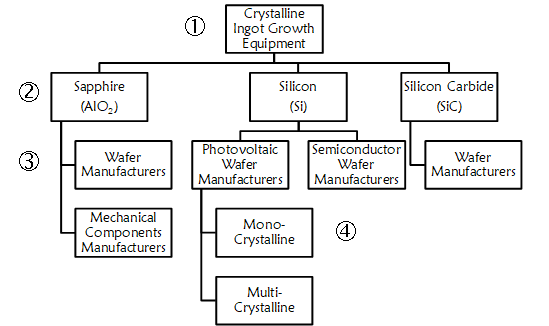Your market strategy defines the target for your product strategy. If you don’t have a target, you don’t know where to aim. If you don’t know where to aim, you can expect a lot of misses. Misses like
- Losing to a more focused competitor,
- Failure to achieve growth objectives,
- Costly, over-configured products,
- Low prices,
- Ineffective, high-cost marketing, or
- Frequent point-of-sale customization requests
Market strategy and product strategy are two sides of the same coin. Market strategy defines the customers that will buy your product. On the flip side, product strategy defines the product that your customers will buy. Market strategy is a proactive, deliberate decision to serve a group of customers
- With similar buying needs,
- That is large enough to fulfill your financial objectives,
- Whom you will understand as well as you do your own company and products, and
- For whom you will create unique value.
Market strategy is a proactive, deliberate, decision to serve a group of customers to the exclusion of all other groups of customers.
The group of customers you are targeting with your market strategy is called a market segment.
A market segment is a group of potential customers that have common buying behaviors that are different from all other potential customers
The market segmentation process subdivides a large market into smaller segments that can be targeted with a product strategy. A market segmentation exercise can be prospective or retrospective, depending on whether you seek to Identify potential targets for a product strategy or clarify targets for your existing product strategy. To identify or clarify the targets for your product strategy
- Define your overall market,
- List potential segmentation variables,
- Segment your overall market, then
- Check if your segmentation is useful.
Define Your Overall Market
An overall market definition gives your segmentation effort a starting point. It should be broad enough to contain target and non-target market segments.
For example, suppose you intend to supply crystal-growth equipment to photovoltaic-wafer manufacturers. Photovoltaics (a.k.a. solar cells) are part of the renewable energy market. However, the renewable energy market includes wind, hydroelectric, and biofuel. Choosing “Renewable Energy” as your overall market would be too broad. You will be better off defining your overall market with something closer to home, like the overall “Crystalline Ingot Growth Equipment” market, and segment from there.
Define your overall market using one of your segmentation variables. The most common variables for defining overall capital equipment markets are industry, organization type, and application. See the table below for examples of each of these.
| Industry | Organization Type | Application |
| Semiconductors | Hospitals | Waste remediation |
| Plastics | Airlines | Thin-film deposition |
| Healthcare | Plastics manufacturers | Long-haul flights |
| Photovoltaics | Semiconductor Manufacturers | Laser cutting |
| Construction | Construction companies | Steel construction |
| Aviation | Airports | Atomic analysis |
List Potential Segmentation Variables
Segmentation variables are those factors that distinguish the participants in your market. Your job is to select the variables your market research has determined most relevant to defining buying behavior for products like yours.
For capital equipment manufacturers, common market segmentation variables include
- Industry,
- Organization type,
- Equipment application,
- Buying organization’s size,
- Buying organization’s product or service
- Geography, and
- Equipment purchase rate
Segment Your Overall Market
Once you’ve defined your overall market, use your segmentation variables to divide your overall market into segments. Segment down to a level where the segments define groups of customers with common buying behaviors that are different from all other segments.
Communicate your segmentation in a market segmentation tree. A market-segmentation tree is a hierarchal representation of your overall market where each segment is a subsegment of the one above it. See the example market segmentation tree for the overall market “Crystalline Ingot Growth Furnaces” in the figure below.

Using a segmentation variable for multiple segmentation levels is perfectly acceptable. The segmentation variables used in the example market map above are as follows:
- Level 1: Industry
- Level 2: Application
- Level 3: Organization type
- Level 4: Application
You must have an “organization type” on your market map. Only that level and those below it are useful segments for your product strategy. Organizations buy capital equipment. Without organizations, there are no buyers to target. In the example above, all the boxes with the word “manufacturers” represent equipment buying organizations. Those boxes and anything below them could be targets for a product strategy.
Also, somewhere on your market map, you should be able to point to a single box representing a segment that can be targeted with a product offering. Again referring to the example above, photovoltaic wafer manufacturers making multi-crystalline wafers is a market segment that could be targeted.
Your market map can be as detailed as you need to meet your segmentation objective. For example, you could detail your market map to include targets for your platforms, products derived from those platforms, and even configurations of those products.
Check – Is Your Segmentation Useful?
There is more than one way to segment a market. Just defining market segments is not enough for success. Therefore, you must segment your market in a way that can effectively guide your product strategy. First, identify the segments in your market segmentation tree that are or could be targets for your product strategy. Then test those segments against the four questions below.
- Can you identify the individual buyers within each segment?
- Do all the buyers within each segment have common buying behaviors?
- Is the buying behavior within each segment different from all other segments?
- Can each segment be measured? (Number of participants, buying rate, growth rate, etc.)
If you can answer “Yes” to all four, you have probably developed a useful market segmentation or your product strategy. If you can’t, iterate until you can.

